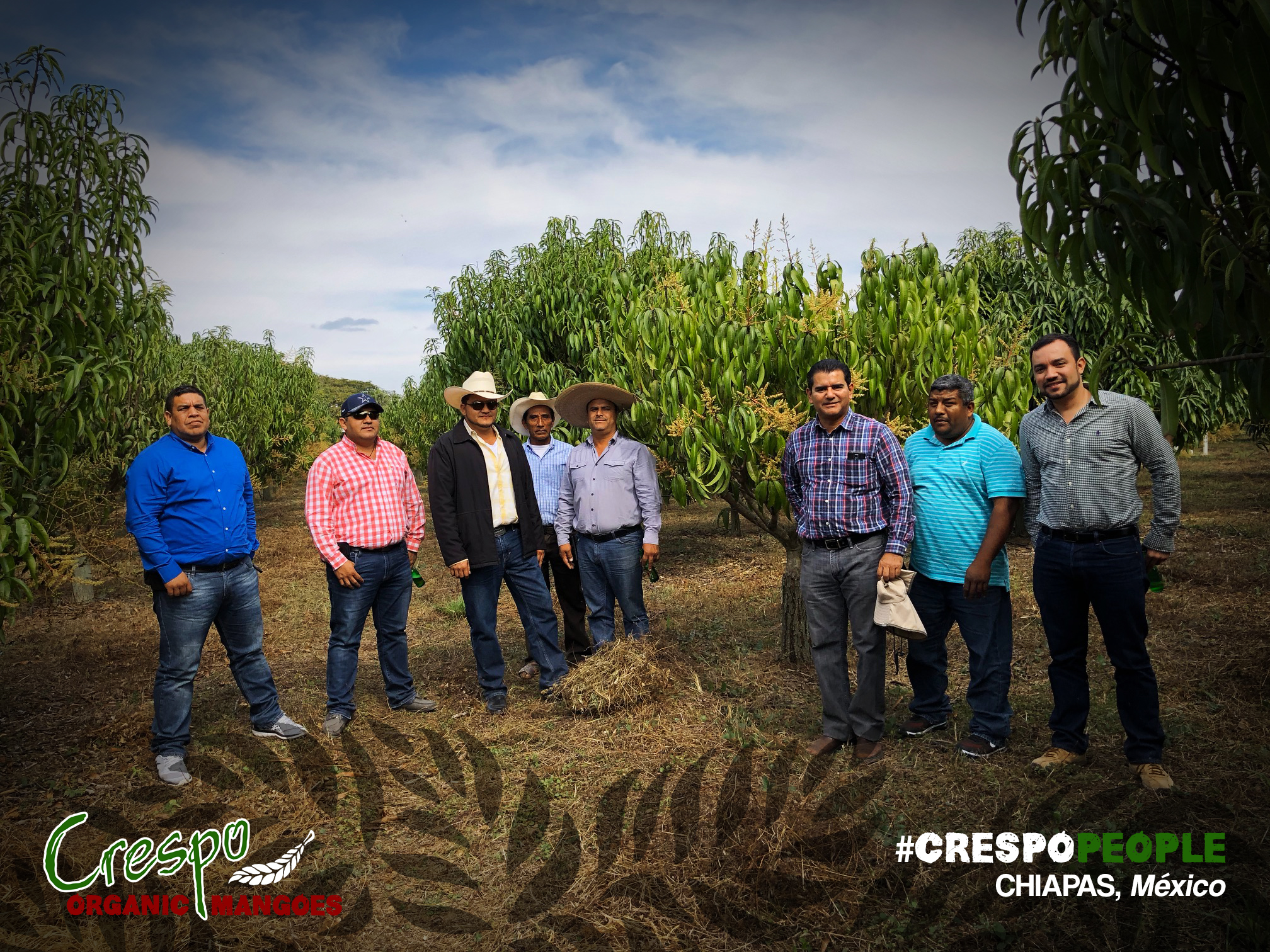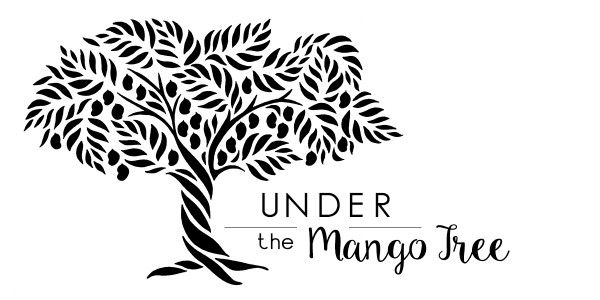
Our Direct Trade mango program gets you out of the cold!
This mango season has been an odd one so far, no doubt about it. Not only did it start much earlier than average but volume output jumped up considerably faster than usual. Peru and Mexico are overlapping longer this season and in high volumes. It also looks like we are in for a longer and colder winter, which complicates presenting consumers with the amazing quality hailing from the Mexican orchards these days. All of these things make for a complex start of the season, which means we all need to be good partners for optimal success. That’s where we shine!
The Crespo Organic Direct Trade Program is exactly the kind of program needed for this partnership success; regardless if you are a retailer, wholesaler, distributor, home delivery agent or processor. We are practicing what we preach currently and working diligently with our customers to achieve fair and stable pricing for all, while delivering the high quality mangoes Mexico is producing and consumers crave.
The direct trade model (originally founded in coffee) was motivated by a desire to build more sustainable, mutually beneficial transparent trade systems with higher quality supply chains. It is the result of farmers and farmer advocates building direct relationships with retailers, wholesalers, distributor, home delivery companies and processors – specifically the kind who are pragmatic in the viewpoint of the importance of the farmer, who can only produce the quality needed with clear channels of USEFUL information flow.

Direct trade is quality-centric, where shared business goals lead the progress forward through all the complexities and challenges that are sure to arise in agriculture and the distribution of fresh food. The farmer is the expert on production of a high-quality product, and the customer (in our case, wholesalers and retailers etc) is the expert on product distribution to the consumer. The two parties exchange information on the challenges and opportunities, and they strategize to build long-term commerce relationships established on trust, transparency and respect. In this model industry product standards are often challenged and raised, as are all parties’ margins while the consumer gets a fair price.
Currently we are raising standards and working to educate our partners and industry on the need to handle mangoes differently during this arctic wallop we all find ourselves in. Moving through this early season successfully ensures that we can continue to build demand and momentum for the heavy season- aka summertime.
Despite near perfect weather from Chiapas and Oaxaca, the colder climates across the USA & Canada make for super complex and often damaging cold chain management and distribution. Quality at consumer level is extremely challenging with this cold weather. Basically, this means we have to work together and not against each other. Part of that success is offering stability and consistency of product (size/availability). And part of it is listening, communicating, sharing and educating on the complexities we see and hear that are happening in the actual marketplace. Not the hearsay, but the facts.

Many competitor companies are struggling to find clarity in demand, with the extreme weather popping in and out of the most unexpected places and we see a significant amount of pricing Yoyo-ing on the market. Many brokerage companies (no risk middle men) are offering at extraordinarily high prices. We see a great deal of price gauging, excess inventories and depleted inventories when we look around into the marketplace. There is an unspoken message in the air in these markets that the grower or growing region is the problem when in reality, for this particular case, it’s the cold weather in the USA & Canada and the overlap of the Mexican and Peruvian season- which includes the problems with the Peruvian season that have made demand (thus price) more difficult to gauge.
For our side, offering stable prices and focusing on how to maximize final end user quality for our program and repeat customers and all the nuances (weather) of each particular area, we find we are moving through the difficulties with more achievements than failures. This intricate dance we must do now sets all of our partnerships up for great success while continuing to lure in more mango eaters without deterring them by offering a bad taste from the mango display.
All of this is the benefit of a Direct Trade program. Win, win, win.
We have managed to wrangle up some of the best advice from our own Crespo Organic supply chain from orchard to consumer (retailers, wholesalers, distributors, home delivery agents and processors) for the current cold climates we find all over the USA & Canada in hopes that by sharing them we are doing a service to the Mexican mango- it’s success is our success!

Ripening
Mexican mangos are harvested at a higher brix than their Peruvian and Ecuadorian export counterparts so they really do have superior taste/sugar. Currently they are being harvested in optimal warm tropical conditions so their natural ripening phase should be consistent. It starts off a little slow at the beginning of each region and speeds up as the trees/fruit matures.
We (I) do not believe in gassing Mexican mangoes. (We rarely see it on the organic side and from what I have seen.) More often than not it results in many over ripe mangoes on display, many of which have a flesh texture that is very different (unpleasant) than naturally ripened mangoes. Mangoes that are resistant to ripening (cold shocked) wont be any better gassed. Mangoes like to be warmed gently. (Don’t we all.) With optimal temperate conditions Mexican mangoes will ripen naturally and taste better and retailers should be able to offer a display filled with mangoes in varying stages of ripeness which has proven to be what consumers want. As most mango varietals can be used/eaten at all stages of ripeness, with the exception of the Ataulfo.
Adding some warmth to mangoes this time of year, during these colder climates has proven beneficial to keeping their natural ripening phases on track – versus shocking them into suppression.
Warmth
After they are packed they go through a complete cooling process that lasts about 24 hours, remember they are hot water bathed so this is crucial to get them to colder temps right away. As they ride up from Oaxaca and Chiapas (currently where harvest is taking place) temperatures on most of our refers show about 52 degrees F. Our border warehouses store at 50 degrees F and we recommend that most transport the mangoes to final destinations at that same temperature. From there we recommend a little warmer temp to help the mangoes move into natural ripening 53-55 degrees F and/or ambient temperatures or on the floor displays. All of our Ataulfo mangoes are shipped with a top secret covering- or what I a call – a light grandma jacket, that protects them not just from the cold but any little breezes that can lead to black marks. Ataulfos are sensitive to cold and air.
Essentially because mangoes like warm and tropical we need to make sure they get as much warm and tropical along the way even at local distribution and especially when it’s cold at the local level. This isn’t easy, but this truth is what offers the best overall quality so the more we try and make it happen; better mangoes and a better mango program.
This time of year it means in order to appease consumer demand and capture optimal flavor we need to change some internal systems: keeping temperatures between 53 -55 degrees through local distribution and even blanketing.

Blanketing
The mangoes are at a longer ripening phase currently because they are new crop and because they are all mostly being shocked by cold when they arrive into the USA. That means they are staying greener longer and often can show up on the shelves too green. This is a problem for consumers especially with the Ataulfo mango. Since Mexican mangoes (unlike Ecuador and Peru) are picked at high brix they should ripen fairly easily and consistently once they have some warmth. Blanketing, using produce blankets, is fairly common in organics with bananas and avocadoes and many Crespo Organic customers see success with this method, all season long. We are seeing it incorporated more and more at retail level where sales volumes of mangoes are high. This little warm boost goes a long way.
Coolers at the Retail Level
Coolers at retail level can be a real problem for mangoes this time of year and in general. Most of our retailers see optimal success when mangoes are stored out of coolers in a warmer back room (~55 degrees F). Mangoes should never be transported or stored below 50 degrees F. Ever.
Consumer Storage & Education
We have received good advice from many of our store level partners in that floor staff need to help spread the word and thus be educated themselves. Mangoes need to be stored outside of the refrigerator in an ambient temperature. Once mangoes are brought into the consumers home, as long as they have warmth they should ripen at a moderate rate, the key is keeping them warm.
Ataulfo mangoes can only be eaten once fully ripe. If they are eaten green they have a bitter taste. It’s extremely important for floor staff or signage to reiterate this when ataulfos are greener a little longer than usual.
Placing mangoes in a paper bag at consumer level with a banana can also help mangoes ripen faster, the ethylene the banana gives off will help ripen the mango. This method, we find, differs from mass gassing and provides a better flavor for the consumer.
Peel them before refrigerating. Removing the peel prevents browning once refrigerated and is easier to handle without the peel if freezing is desired.

Point of Sale Educators
We of course have all the Point of Sale Educators you need for your mango displays. We will also be offering our (typically in store) retailer driven Mango Education Seminar via Zoom this April along with our annual Marketing Webinar.








No Comments